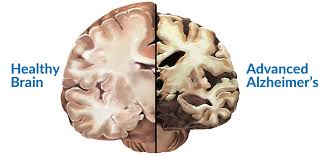A newly discovered pathway leading to neurodegeneration in Alzheimer’s disease (AD) may unlock the door to new approaches for treating the disease.
The findings, published in the journal Cell Reports, focuses on the tau protein, whose abnormal aggregation (clumping) has long been known to drive the nerve damage in AD. New research shows that the tau protein directs the formation of stress granules, which are molecular complexes that allow nerve cells to adapt to stresses, such as injury. The tau-stress granule complex is usually short lived, but in the setting of chronic stress, tau persistently forms into a cluster, leading to the degeneration of nerve cells seen in AD.
Boston University School of Medicine (BUSM) researcher Benjamin Wolozin, MD, PhD, explains, “Scientists have known for a long time that during disease, tau protein gets modified, changes its location in nerve cells and then aggregates.” In healthy nerve cells, tau resides in a part of the nerve cell termed the axon, the long, slender part of the cell that carries electrical impulses away from the neuron’s body. Wolozin’s group showed that moving tau from the axon to the nerve cell body helps the nerve cells respond to stress (such as injury). “The nerve cells do this in order to stimulate the formation of stress granules, which help the cell to adapt under stressful conditions. Stress granules instruct the cell to divert energy toward making protective proteins and away from making specialized proteins, which are less necessary during stress.”
“Surprisingly,” says Wolozin, professor of pharmacology and neurology, “the association of tau with stress granules also caused tau to cluster.” Most stresses are short term, resolve quickly and are therefore not a problem. “But some stresses are chronic, such as vascular disease or the accumulation of beta-amyloid–a protein that accumulates outside the neuron in Alzheimer’s disease.” Chronic stress leads to excessive, persistent accumulation of stress granules containing aggregated tau, which ultimately damages nerve cells, causing degeneration.
According to Wolozin with this finding comes hope. His team found that reducing the amount of one of the key stress granule proteins, TIA1, prevented tau aggregation and nerve cell degeneration. “While still in its early stages, this work points to entirely new approaches to treating Alzheimer’s disease.” Wolozin and his team are now planning to test their research findings in animal models of Alzheimer’s disease.







